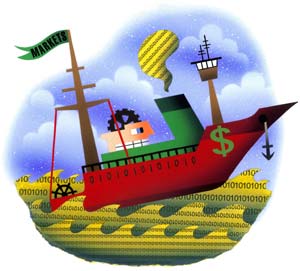|
|
|
 |
|
|
U.S.
Economy >
Foreign Trade |
|
U.S.
foreign trade and global economic policies have changed direction dramatically
during the more than two centuries that the United States has been a
country. In the early days of the nation's history, government and business
mostly concentrated on developing the domestic economy irrespective
of what went on abroad. But since the Great Depression of the 1930s
and World War II, the country generally has sought to reduce trade barriers
and coordinate the world economic system. Americans are convinced that
trade promotes economic growth, social stability, and democracy in individual
countries and that it advances world prosperity, the rule of law, and
peace in international relations. |
||
|
||
| Texts
are abridged from U.S. State Department IIP
publications and other U.S. government materials. |
||
| What
kind of information materials are available?
CD: These documents are available in fulltext format on the About the USA CD-ROM. Teachers: Request a copy for classroom use. L: Selected documents are available in German as well as other languages, including Arabic, Chinese, French, Spanish, Persian and Turkish. |
DISCLAIMER
Any reference obtained from this server to a specific commercial product, process, or service does not constitute or imply an endorsement by the United States Government of the product, process, or service, or its producer or provider. The views and opinions expressed in any referenced document do not necessarily state or reflect those of the United States Government. |

